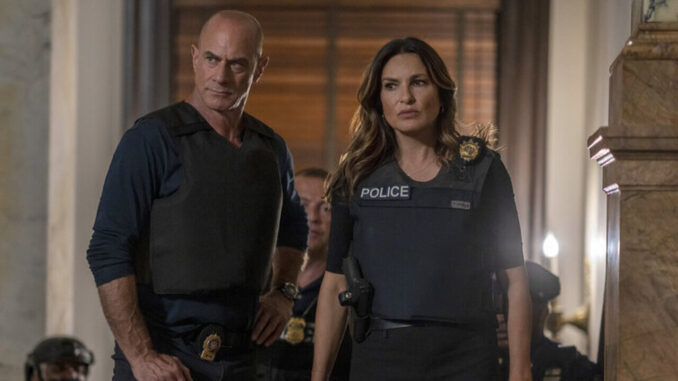
The fluorescent hum of the interrogation room seems to amplify the silence, pressing down on the small figure slumped across the table. Her hair, once meticulously styled for school, now falls in disarray, obscuring a face still bearing the soft contours of youth. This isn’t the image of a hardened criminal, but rather a girl, barely out of childhood, caught in the harsh, unforgiving glare of adult consequence. This is a scene Law & Order: SVU has perfected, a recurring nightmare where innocence shatters against the stark reality of human darkness, and in this instance, a young female student confesses to killing her rival.
The power of such a confession on SVU lies not just in the revelation of guilt, but in the tragic dismantling of expectation. We are conditioned to see young girls as victims, not perpetrators, especially in the brutal context of murder. Yet, as the words tumble out, whispered or defiant, a chilling narrative begins to unfold. It might start with a soft, almost imperceptible nod, a tremor in a voice barely audible over the recorder’s whir, or a sudden, cathartic sob. “I did it,” she might finally choke out, the admission cutting through the sterile air like a serrated blade. Her eyes, often red-rimmed and distant, hold a terrible mix of fear, regret, and perhaps, a lingering, unsettling defiance.
But beneath this stark admission lies a labyrinth of human emotion and societal pressure that SVU meticulously unearths. Why did she do it? The “rival” is rarely just an abstract competitor; she is often a catalyst for deeper insecurities, a mirror reflecting flaws, perceived or real. Was it academic pressure, the relentless pursuit of grades and scholarships, where one’s success felt directly contingent on another’s failure? Was it romantic entanglement, a desperate, misguided attempt to secure affection or prevent heartbreak? Or perhaps, most insidious, was it the venomous dance of social hierarchy, the endless torment of bullying, the sting of exclusion, culminating in a moment of desperate, irreversible rage?
SVU doesn’t just present the crime; it peels back the layers to reveal the seething crucible of adolescence. We are shown flashbacks: the icy stares, the snide remarks, the public humiliations, the private anxieties. We see the gradual erosion of empathy, the build-up of resentment, until a breaking point is reached. The confession, then, isn’t just an acknowledgement of a physical act, but a culmination of a psychological journey – a desperate cry for attention, an explosive release of pent-up frustration, or a chillingly premeditated act born of a warped sense of justice. The scene illustrates the terrifying potential for darkness even within those we deem most vulnerable.
The impact of this confession extends beyond the immediate shock. It reverberates through the lives of everyone involved. For the victim’s family, it’s a bitter, painful closure, often devoid of true understanding. For the detectives, particularly Olivia Benson, it’s another profound testament to the fragile line between victim and perpetrator, the uncomfortable truth that sometimes, the monster wears a high school uniform. And for the young girl herself, it marks the end of one life and the beginning of another, a future irrevocably stained by a moment of fatal choice. The sterile interrogation room, with its unforgiving light, becomes a stage where innocence is lost, not through experience, but through an act of ultimate transgression.
In the end, the scene of a young female student confessing to murder on SVU is a microcosm of the show’s enduring power. It challenges our preconceptions, forces us to confront uncomfortable truths about human nature, and illustrates the complex, often tragic interplay of youth, pressure, and the irreversible consequences of violence. It’s a stark reminder that beneath the polished veneer of everyday life, dark currents can swirl, capable of engulfing even the brightest futures.
